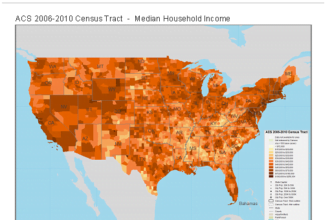Software companies, as represented by the iShares S&P North American Technology-Software Index Fund, continue to outperform the overall market indices (see table.) Although these companies and their stocks have been negatively impacted by the recession, IT spending and the bear market, they are in a stronger position than other industries and companies to weather the economic storm.
First, in general, these companies are relatively debt free and generate a positive cash flow even in hard times. Second, although new contracts and upgrades may be delayed, many software firms have a steady stream of “maintenance” fees and professional services. Finally, you could consider these firms the “consumer staples” of the business world. Most of these firms sell software that businesses use to operate, improve productivity and manage/improve performance.
As discussed in a previous post, software is a subsector of the high tech industry that should be leaders when the overall market rebounds.
The Business Intelligence & Data Warehouse (BI/DW) Index has, since much of the firms within it sell software, also performed better than the overall market. However, even with the high prio…
Software companies, as represented by the iShares S&P North American Technology-Software Index Fund, continue to outperform the overall market indices (see table.) Although these companies and their stocks have been negatively impacted by the recession, IT spending and the bear market, they are in a stronger position than other industries and companies to weather the economic storm.
First, in general, these companies are relatively debt free and generate a positive cash flow even in hard times. Second, although new contracts and upgrades may be delayed, many software firms have a steady stream of “maintenance” fees and professional services. Finally, you could consider these firms the “consumer staples” of the business world. Most of these firms sell software that businesses use to operate, improve productivity and manage/improve performance.
As discussed in a previous post, software is a subsector of the high tech industry that should be leaders when the overall market rebounds.
The Business Intelligence & Data Warehouse (BI/DW) Index has, since much of the firms within it sell software, also performed better than the overall market. However, even with the high priority that IT places on BI and DW, it still is susceptible to slowdowns. Primarily several of the larger tech titans have a portion of their sales from hardware, such as PCs, servers or storage, which, as discussed previously is more susceptible to IT budget constraints. One of the easiest IT budget reductions is to lengthen a PC upgrade cycle or consolidate servers; therefore the BI/DW index has recently gone lower based on the market’s perception that hardware-laden tech companies will be impacted more negatively than previously thought.
The On-Demand Software (or SaaS) Index, even though the companies in it represent almost an exclusively software business, has not fared as well as the IGV or BI/DW indices but have slightly beaten the NASDAQ. The reasons for the underperformance in relation to the other software indices are: businesses that have not been tested through recession periods, fear of potential competition, several are still losing money (and may need more capital that may be hard to get) and their business model does not offer the cash flow of the traditional software firms. In the long-run, on-demand pundits will argue that the subscription fee model will replace the higher upfront purchase prices and annual maintenance fees of the traditional software firms, but in the short-run the flipside of that approach means that the SaaS vendor does not get the cash they may need to grow or maybe even to survive. I am not suggesting that any firm in the index is struggling but the market has discounted these firms for more than a year now and before investing: examine the industry and business processes supported by the on-demand software product, assess its competitors, track the number of new license growth and monitor renewal percentages.
Disclosure: I have no current stock positions in any of the companies listed in the On-Demand Software Index. My family or I do have positions in several of the DI/DW companies including: INFA, NZ, ORCL and TDC.







